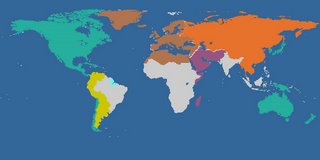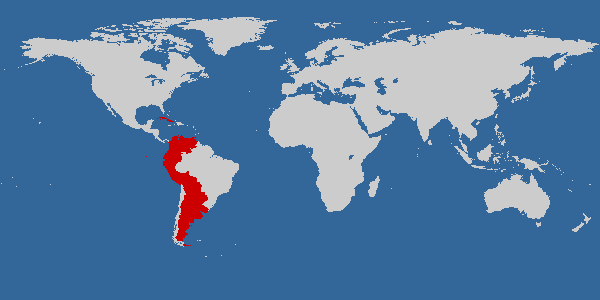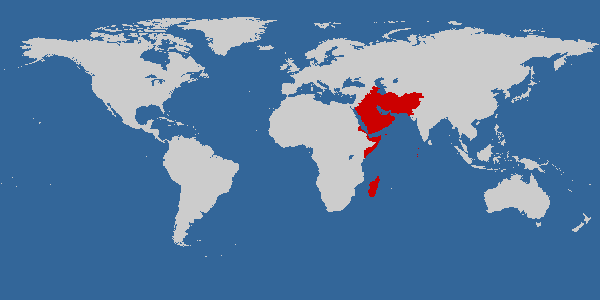I am sitting here waiting a scsi drive to be replaced by a vendor and its a friday after 4 so O don't feel like doing work-work during that wait. Instead, I am going to do the first post of those extinction posts I've been promising. This is, actually, a very short post compared to the ones coming. This one deals with the Proterozoic-Cambrian Boundary and the Cambrian Extinctions.
Mass Extinctions and Their Aftermath deals with this.
Catasrophes and Lesser Calamities does not. FYI.
There appears to have been a major extinction of the Ediacaran fauna at the end of the Vendian and the beginning of the Cambrian (plus or minus). One suggestion was that this was due to a bollide impact because there was an iridium spike found in China. Unfortunately the supporting evidence doesn't seem to be there and the bollide impact (if it happened) didn't coincide with the extinction. Another suggestion was that the new forms of life - arthopods and everything related to us - wiped them out, erm, outcompeted them. This has its problems because there's not a lot of evidence of overlap between the Ediacaran and Cambrian faunas. However, there is some based on the work of Grotzinger et al (1995)[1] that disputes this. Googling further work of Grotzinger's suggests that this is definitely the case since the 1997 publishing date of
Mass Extinctions and Their Aftermath. However, Hallam suggests that it is really a case of sealevel changes mixed with anoxia (his favourite scenario as I
noted before)[2].
Truthfully,
Mass Extinctions and Their Aftermathbarely touches the subject of the Vendian-Cambrian Boundary, but it is present and the scenarios above are brought up. Since the Ediacaran fauna is of interest of some of my readers, I thought I'd make sure to cover them here. They do touch on the fact that there does seem to be multiple hints at extinctions during the Vendian (there is a very nice graph on page 26 of the carbon, sontrontium and sulphur isoptopes over time in the Vendian as support). However, there is more information with respect to the Cambrian Radiation and its associated extinctions. Note, I didn't say
mass extinctions.
Mass Extinctions and Their Aftermath does talk about the extinction events that seem to have struck the Cambrian. There are multiple of them. None of them are the monster wipe out that Stephen Jay Gould implies in
Wonderful Life: in fact, none of the five events in or at the end of the Cambrian count as the Big Five[3] Mass Extinctions. Going further, large parts of that last section of Wonderful Life (Gould's interpretation of the Cambrian fossils) are, frankly, very wrong. There were five events that Hallam and Wignall identify. The end Cambrian event - the Trempealeauan - was no worse than two others during the Cambrian (Lower Drebachian and Upper Botomian). The U Botomian was the first larger scale extinction event after the Cambrian Radiation. FWIW, when reading things online, Gould still holds an iconic status. Alas.
The Botomian crises in the Cambrian seem to have different causes. The Upper Botomian seems to have been due to anoxia according to Hallam and Wignall: extensive and world wide black shales, caused deposition of organic material in anoxic bottom waters as well as isotopic analysis both support this scenario[4]. The Early Middle Botomian seems to have been related to a massive loss of habitat when the epicontinental seas receded[5]. The U Botomian seems to have been more of a killer than the Early Middle Botomian.
The biomeres[6] are the Marjumid, Pterocephalid, and Ptychaspid. Each has an extinction associated with it. All three seem to have a stepwise mass extinction associated with them, but also in the case of the end ot the Ptychaspid Biomere there seems to be a more catastrophic one. Again, Hallam and Wignall support the mechanism of transgression and anoxia as the mechanism for the biomere extinctions. I worry a bit if Hallam is trying to shoe horn all the different extinctions into this mechanism.
The bollide impact scenario for the three biomere extinctions has been dismissed because there haven't been any iridium markers found like in the sediments. I only worry a bit about the bollide chemistry as I have stated before. Wrong kind of bollide and you might not get a iridium spike. Note, I am not supporting the bollide impact as the source of these extinctions though. Just that relying on iridium as the one and only marker might be a mistake. Other physical evidence or lack there-of might be better: the shocked quartz and spherules, frex.
An interesting tidbit that the readers might find worthwhile. The main critter used for tracking these biomere extinctions is the trilobite. Their repeated rise and extinction seem be good trackers for what else was going on. Paleontologists seem to rely on certain kinds of animals that are very common and widespread to track the extinctions trilobites are one of them. Ammonites were another. Conodonts are another still.
Anyways, the next post on the Mass Extinction subject will be on the Late Ordovician Extinction. The first of the Big Five. It might be a while though. As in a week. I hope. The node is done and I really want to go home. Ciao folks
1. Grotzinger, JP, Bowing, SAA, Saylor, BZ and Kaufman AJ (1995)
Biostratigraphic and geochronologic constraints on early animal evolution, Science 288, 207-28
2. Hallam, A. (1989)
The case for sea-level change as a dominant causal factor in mass extinction of marine invertebrates, Philosophical Transactions of the Royal Society of London, B325, 437-55
3. The Big Five Mass Extinctions are the Late Ordovician, Devonian, Permian, Upper Triassic, and Cretaceous.
4. There are multiple papers here. I'm going to be a tad lazy since this is for fun: Zhuravlev 1996 (Reef ecosystem recovery after the Early Cambrian extinction), Nicholas 1994 (New Stratigraphic constraints on the Durness Group of NW Scotland), etc.
5. Zhuravlev, A, Wood, R,
Anoxia as the cause of the mid-Early Cambrian (Botomian) extinction event, Geology 24, 311–14
6. A biomere is defined as "Successions of faunal zones containing evolutionally related forms, but bounded by non-evolutionary biotic discontinuities" quoted from
here, but really Palmer (1965).

















